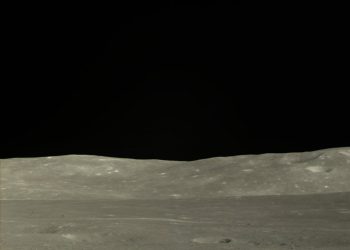NASA’s Global-scale Observations of the Limb and Disk (GOLD) mission has revealed a groundbreaking discovery in Earth’s upper atmosphere. The mission has identified unusual X- and C-shaped structures in the ionosphere, challenging existing scientific models and deepening the mystery of this atmospheric layer.
The ionosphere, extending from approximately 50 to 400 miles above the Earth’s surface, is a crucial region where solar radiation ionizes atmospheric particles, forming a plasma of charged particles. This layer is vital for long-distance radio communications, reflecting radio waves back to Earth. However, GOLD’s latest observations have unveiled formations that current models cannot fully explain.
In a study published in the Journal of Geophysical Research: Space Physics, researchers detailed the discovery of an X-pattern, termed the Equatorial Ionization Anomaly (EIA-X), observed during geomagnetically quiet times. Previously, such structures were noted only during significant disturbances like solar storms or volcanic eruptions. This new finding suggests unknown processes in the lower atmosphere influencing the ionosphere.
Computer models indicate these X-shaped anomalies emerge during pre-sunset hours, persisting until after sunset. These shapes may result from lower atmospheric changes drawing plasma downward, though further investigation is needed.
“The X is unusual because it indicates more localized driving factors,” explained Dr. Jeffrey Klenzing from NASA’s Goddard Space Flight Center. “Seeing it during quiet times suggests significantly lower atmospheric activity affecting the ionospheric structure.”
Odd Structures on the Sun
In addition to the X-patterns, GOLD also identified C-shaped and reverse-C-shaped plasma bubbles close to each other. Typically, C-shaped plasma bubbles are long and straight, aligning with magnetic field lines. The proximity of these structures, often only 400 miles apart, implies strong turbulence or vortex-like activity in the lower atmosphere.
Dr. Deepak Karan from the University of Colorado’s Laboratory for Atmospheric and Space Physics highlighted the significance of these discoveries. “The close proximity of these differently shaped plasma bubbles suggests complex dynamics, possibly involving strong turbulence or tornado-like activity in the atmosphere.”
The clarity and consistency of GOLD’s findings are attributed to its geostationary orbit, enabling continuous monitoring of the same Earth region. Since its 2018 launch, GOLD has recorded only two instances of closely paired C-shaped structures and a few occurrences of the X-shaped anomaly during geomagnetically quiet periods.
These findings are crucial as they could impact our understanding of the ionosphere’s interaction with communication and navigation signals, which plasma structures can disrupt. Technologies relying on stable ionospheric conditions, like GPS and satellite communications, are particularly vulnerable to such disruptions.
The mission’s results underscore the complexity of Earth’s atmosphere and the necessity for ongoing research to understand the various influencing factors. Continued observations by GOLD, along with data from other heliophysics missions, are expected to provide further insights into these phenomena.
Researchers emphasized the importance of their work in advancing our knowledge of the ionosphere’s response to external drivers, aiding in the development of space weather forecasting capabilities.
“A comprehensive understanding of the dynamics during the pre- to post-sunset period is crucial not only for advancing our knowledge but also for developing space weather forecasting,” they concluded.
These discoveries by NASA’s GOLD mission mark a significant step forward in our quest to understand the intricate workings of Earth’s atmosphere and its impact on our technological world.











